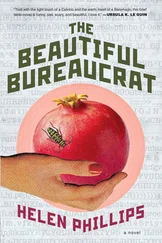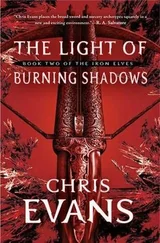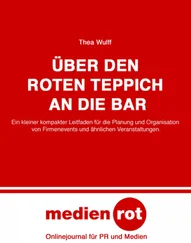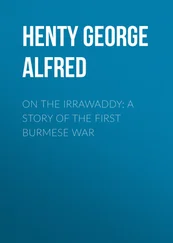Babur - The Bābur-nāma
Здесь есть возможность читать онлайн «Babur - The Bābur-nāma» — ознакомительный отрывок электронной книги совершенно бесплатно, а после прочтения отрывка купить полную версию. В некоторых случаях можно слушать аудио, скачать через торрент в формате fb2 и присутствует краткое содержание. Жанр: foreign_antique, foreign_prose, на английском языке. Описание произведения, (предисловие) а так же отзывы посетителей доступны на портале библиотеки ЛибКат.
- Название:The Bābur-nāma
- Автор:
- Жанр:
- Год:неизвестен
- ISBN:нет данных
- Рейтинг книги:4 / 5. Голосов: 1
-
Избранное:Добавить в избранное
- Отзывы:
-
Ваша оценка:
- 80
- 1
- 2
- 3
- 4
- 5
The Bābur-nāma: краткое содержание, описание и аннотация
Предлагаем к чтению аннотацию, описание, краткое содержание или предисловие (зависит от того, что написал сам автор книги «The Bābur-nāma»). Если вы не нашли необходимую информацию о книге — напишите в комментариях, мы постараемся отыскать её.
The Bābur-nāma — читать онлайн ознакомительный отрывок
Ниже представлен текст книги, разбитый по страницам. Система сохранения места последней прочитанной страницы, позволяет с удобством читать онлайн бесплатно книгу «The Bābur-nāma», без необходимости каждый раз заново искать на чём Вы остановились. Поставьте закладку, и сможете в любой момент перейти на страницу, на которой закончили чтение.
Интервал:
Закладка:
640
yāldāghlāmāī dūr aīdīm. The Second W. – i-B. has taken this as from yāltūrmāq , to cause to glisten, and adds the gloss that the sword was rusty (I.O. 217 f. 70b).
641
The text here seems to say that the three men were on foot, but this is negatived by the context.
642
Amongst the various uses of the verb tūshmak , to descend in any way, the B.N. does not allow of ‘falling (death) in battle.’ When I made the index of the Ḥai. MS. facsimile, this was not known to me; I therefore erroneously entered the men enumerated here as killed at this time.
643
Elph. MS. yakhshī . Zenker explains bakhshī (pay-master) as meaning also a Court-physician.
644
The Ḥai. Elph. and Kehr’s MS. all have pūchqāq tāqmāq or it may be pūḥqāq tāqmāq . T. būkhāq means bandage, pūchāq , rind of fruit, but the word clear in the three Turkī MSS. means, skin of a fox’s leg.
645
The daryā here mentioned seems to be the Kāsān-water; the route taken from Bīshkhārān to Pāp is shewn on the Fr. map to lead past modern Tūpa-qūrghān. Pāp is not marked, but was, I think, at the cross-roads east of Touss (Karnān).
646
Presumably Jahāngīr’s.
647
Here his father was killed (f. 6b). Cf. App. A.
648
‘Alī-dost’s son (f. 79b).
649
The sobriquet Khīz may mean Leaper, or Impetuous.
650
kūīlāk , syn. kūnglāk , a shirt not opening at the breast. It will have been a short garment since the under-vest was visible.
651
i. e. when Bābur was writing in Hindūstān. Exactly at what date he made this entry is not sure. ‘Alī was in Koel in 933 AH. (f. 315) and then taken prisoner, but Bābur does not say he was killed, – as he well might say of a marked man, and, as the captor was himself taken shortly after, ‘Alī may have been released, and may have been in Koel again. So that the statement ‘now in Koel’ may refer to a time later than his capture. The interest of the point is in its relation to the date of composition of the Bābur-nāma .
No record of ‘Alī’s bravery in Aūsh has been preserved. The reference here made to it may indicate something attempted in 908 AH. after Bābur’s adventure in Karnān (f. 118b) or in 909 AH. from Sūkh. Cf. Translator’s note f. 118b.
652
aūpchīnlīk. Vambéry, gepanzert ; Shaw, four horse-shoes and their nails; Steingass, aūpcha-khāna , a guard-house.
653
Sang is a ferry-station (Kostenko, i, 213). Pāp may well have been regretted (f. 109b and f. 112b)! The well-marked features of the French map of 1904 allows Bābur’s flight to be followed.
654
In the Turkī text this saying is in Persian; in the Kehr-Ilminsky, in Turkī, as though it had gone over with its Persian context of the W. – i-B. from which the K. – I. text here is believed to be a translation.
655
Cf. f. 96b and Fr. Map for route over the Kīndīr-tau.
656
This account of Muḥ. Bāqir reads like one given later to Bābur; he may have had some part in Bābur’s rescue ( cf. Translator’s Note to f. 118b).
657
Perhaps reeds for a raft. Sh. N. p. 258, Sāl aūchūn bār qāmīsh , reeds are there also for rafts.
658
Here the Turkī text breaks off, as it might through loss of pages, causing a blank of narrative extending over some 16 months. Cf. App. D. for a passage, supposedly spurious, found with the Ḥaidarābād Codex and the Kehr-Ilminsky text, purporting to tell how Bābur was rescued from the risk in which the lacuna here leaves him.
659
As in the Farghāna Section, so here, reliance is on the Elphinstone and Ḥaidarābād MSS. The Kehr-Ilminsky text still appears to be a retranslation from the Wāqi‘āt-i-bāburī and verbally departs much from the true text; moreover, in this Section it has been helped out, where its archetype was illegible or has lost fragmentary passages, from the Leyden and Erskine Memoirs . It may be mentioned, as between the First and the Second Wāqi‘āt-i-bāburī , that several obscure passages in this Section are more explicit in the First (Pāyanda-ḥasan’s) than in its successor (‘Abdu-r-raḥīm’s).
660
Elph. MS. f. 90b; W. – i-B. I.O. 215, f. 96b and 217, f. 79; Mems. p. 127. “In 1504 AD. Ferdinand the Catholic drove the French out of Naples” (Erskine). In England, Henry VII was pushing forward a commercial treaty, the Intercursus malus , with the Flemings and growing in wealth by the exactions of Empson and Dudley.
661
presumably the pastures of the “Ilak” Valley. The route from Sūkh would be over the ‘Alā‘u’d-dīn-pass, into the Qīzīl-sū valley, down to Āb-i-garm and on to the Aīlāq-valley, Khwāja ‘Imād, the Kāfirnigān, Qabādīān, and Aūbāj on the Amū. See T.R. p. 175 and Farghāna Section, p. 184, as to the character of the journey.
662
Amongst the Turkī tribes, the time of first applying the razor to the face is celebrated by a great entertainment. Bābur’s miserable circumstances would not admit of this (Erskine).
The text is ambiguous here, reading either that Sūkh was left or that Aīlāq-yīlāq was reached in Muḥarram. As the birthday was on the 8th, the journey very arduous and, for a party mostly on foot, slow, it seems safest to suppose that the start was made from Sūkh at the end of 909 AH. and not in Muḥarram, 910 AH.
663
chārūq , rough boots of untanned leather, formed like a moccasin with the lower leather drawn up round the foot; they are worn by Khīrghīz mountaineers and caravan-men on journeys (Shaw).
664
chāpān , the ordinary garment of Central Asia (Shaw).
665
The ālāchūq , a tent of flexible poles, covered with felt, may be the khargāh (kibitka); Persian chādar seems to represent Turkī āq awī , white house.
666
i. e. with Khusrau’s power shaken by Aūzbeg attack, made in the winter of 909 AH. ( Shaibānī-nāma cap. lviii).
667
Cf. ff. 81 and 81b. The armourer’s station was low for an envoy to Bābur, the superior in birth of the armourer’s master.
668
var. Chaqānīān and Saghānīān. The name formerly described the whole of the Ḥiṣār territory (Erskine).
669
the preacher by whom the Khut̤ba is read (Erskine).
670
bī bāqī or bī Bāqī ; perhaps a play of words with the double meaning expressed in the above translation.
671
Amongst these were widows and children of Bābur’s uncle, Maḥmūd (f. 27b).
672
aūghūl. As being the son of Khusrau’s sister, Aḥmad was nephew to Bāqī; there may be in the text a scribe’s slip from one aūghūl to another, and the real statement be that Aḥmad was the son of Bāqī’s son, Muḥ. Qāsim, which would account for his name Aḥmad-i-qāsim.
Читать дальшеИнтервал:
Закладка:
Похожие книги на «The Bābur-nāma»
Представляем Вашему вниманию похожие книги на «The Bābur-nāma» списком для выбора. Мы отобрали схожую по названию и смыслу литературу в надежде предоставить читателям больше вариантов отыскать новые, интересные, ещё непрочитанные произведения.
Обсуждение, отзывы о книге «The Bābur-nāma» и просто собственные мнения читателей. Оставьте ваши комментарии, напишите, что Вы думаете о произведении, его смысле или главных героях. Укажите что конкретно понравилось, а что нет, и почему Вы так считаете.











